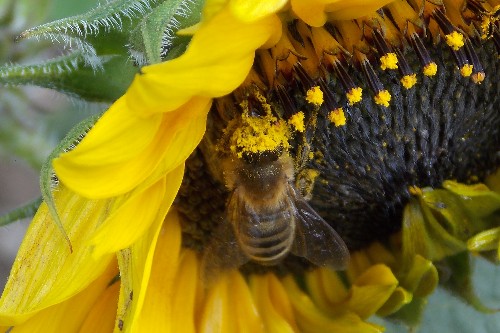Social bees such as honeybees and bumblebees have larger foraging ranges, according to researchers at the University of Bristol.
The findings, published today in Current Biology, show that social bees venture further for pollen and nectar. This has implications for predicting pollination services and for creating effective conservation strategies for bees and plants.
Social bees travel bigger distances as a result of several traits which include body size, colony size, communication and flower constancy.
Larger bees like the bumblebee have greater foraging ranges. They have bigger wings and can fly faster so it’s easier for them to cover more ground.
Bees from greater colonies will experience more competition from their sisters if they stay close to the nest so they need to travel further to avoid congestion
Many social bees have evolved different kinds of communication methods. This allows foragers that have found a highly rewarding flower species to tell their sisters about their discovery. As a result, more bees will have a preference for the same kind of flowers.
Furthermore social bees tend to visit one type of flower during a foraging trip. Flower constancy means that bees ignore viable alternative options as they focus only on a subset of all available flowers, forcing them to travel further to find their favoured flower.
As bees, and especially social bees, are amongst the most important pollinators, while also being under threat, the findings have implications for their protection and the conservation of endangered plants which they pollinate.
Lead author Dr Christoph Grueter, from Bristol’s School of Biological Sciences explained:
“Our findings suggest that solitary bees might be most affected by human-caused habitat loss and fragmentation because they will struggle more to find suitable food sources at greater distances.
“Social bees might be particularly important for the protection of endangered plant species that exist only in isolated patches. Since many social bee species can be kept in hives, we could use our understanding of their foraging ranges in targeted ways to aid the pollination of plants in remote areas.”







